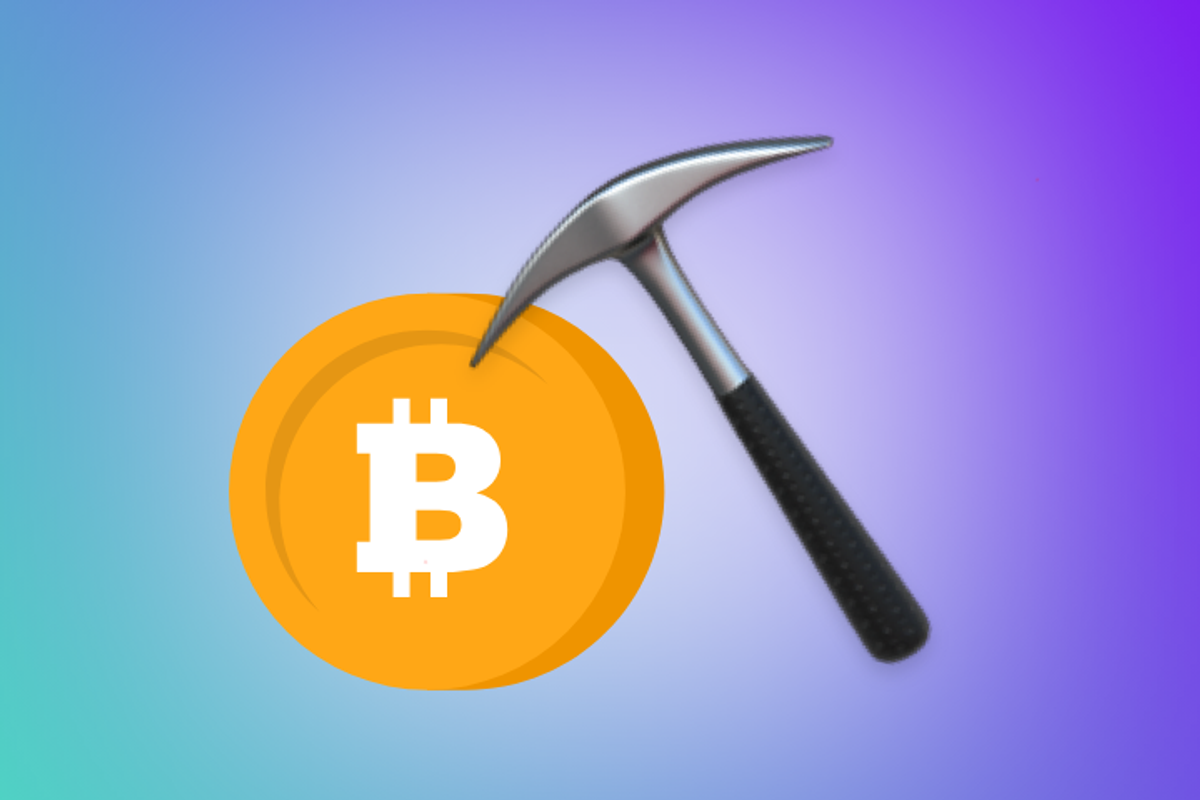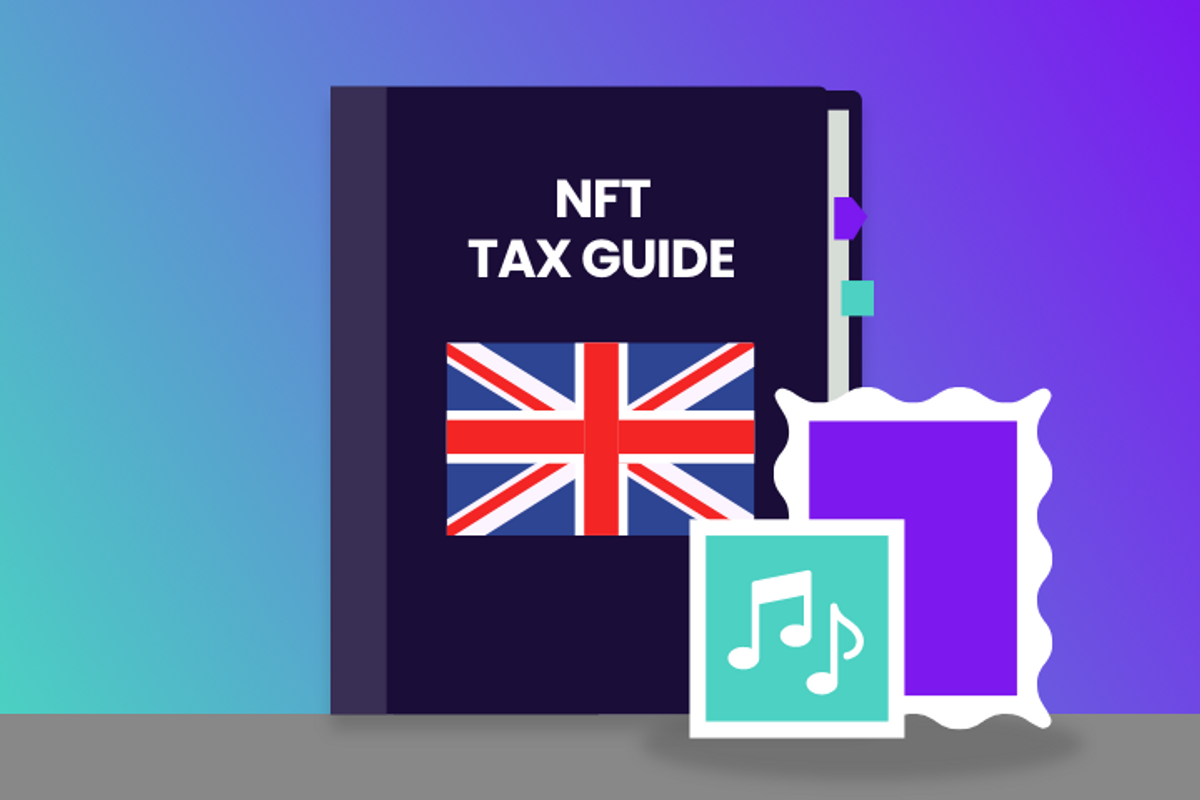
Earning passive income with crypto has become a popular strategy for investors. Whether you’re new to crypto or an experienced investor, there are multiple ways you can earn steady income. In this article we explore different methods such as staking, lending and mining and look at the pros and cons of each. Simply use the jump links on the left to skip through different methods.
What do we mean by passive income from crypto?
Passive income refers to earnings derived from investments that require minimal effort to maintain. In the world of cryptocurrencies, passive income can be earned through several methods, some we’ve listed below.
- Staking crypto
- Yield farming
- Lending crypto
- Dividend earning tokens
- Mining crypto
- Liquidity pools
- NFTs
- Play to earn games
All of these methods range in difficulty meaning that some are more accessible for newbs while others are more suited to technically minded, experienced investors. The value of returns from passive crypto income can vary significantly as well as the receiving method and frequency. For example, staking and lending can offer consistent interest payments, while mining provides rewards in newly minted coins. The value depends on factors like cryptocurrency price movements, network demand, and your level of involvement.
Staking
Staking involves holding and locking up your cryptocurrency in a wallet to support the operations of a blockchain network. In return, you earn rewards in the form of additional coins or tokens. The most popular staking projects are Ethereum (ETH), Cardano (ADA) and Polkadot (DOT).
Pros of staking
- Earn rewards for supporting the network: By staking your crypto, you contribute to the security and efficiency of the blockchain network, and in return, you receive rewards in the form of additional coins or tokens.
- Potential for compound interest: As you earn rewards from staking, they can be reinvested to generate even more returns over time. The exact rewards can vary depending on the blockchain and its specific staking mechanisms.
- Simple to get started and low effort once set up: Staking doesn’t require technical expertise and is easily accessible to investors of all levels. Once you set up your staking wallet and choose your staking pool or validator, the process is mostly hands-off.
- Can be done with various cryptocurrencies and on lots of platforms: Many cryptocurrencies offer staking opportunities, and numerous platforms provide user-friendly interfaces for staking, giving you plenty of options to choose from.
Cons of staking
- Lock-up period may restrict access to your funds: When you stake your crypto, it is often locked up for a certain time, meaning you can't access or trade those funds until the lock-up period ends.
- Rewards can be affected by market volatility: The value of your staking rewards can fluctuate with the market price of the cryptocurrency, which can impact the overall return on your investment.
- Can require a minimum amount of crypto to stake: Many staking platforms have a minimum amount requirement to participate, which can be a barrier for smaller investors. Those offering low minimum amounts generally offer lower rewards.
- Tax obligations: Staking is typically subject to taxation, you’ll need to report and this can complicate your tax filings.
Find out more about staking, including the risks and important considerations when choosing a staking platform in our blog, "Best crypto staking platforms".
You can also check the tax consequences in our article "How is Crypto Staking Taxed?"
Yield farming
Yield farming allows investors to earn passive income by providing liquidity to decentralised finance (DeFi) platforms. You earn rewards based on the amount of liquidity you provide.
Pros of yield farming
- Potentially high returns: Yield farming can offer very high returns. Many DeFi protocols provide lucrative rewards to attract liquidity providers, resulting in substantial gains.
- Access to new DeFi projects and tokens: Yield farmers often get early access to new DeFi projects and can earn rewards in newly launched tokens, providing opportunities for additional profits.
- Flexible options for participation: There are various strategies and platforms available for yield farming, allowing investors to customise their approach based on risk tolerance and financial goals.
Cons of yield farming
- High risk due to market volatility and smart contract vulnerabilities: The value of the tokens provided as liquidity can fluctuate significantly, and smart contracts used in DeFi protocols can be vulnerable to bugs and hacks.
- Requires constant monitoring: Yield farming can be time consuming as it often requires active management and regular monitoring to maximise returns and mitigate risks.
- Complex setup for beginners: Setting up yield farming strategies can be complex. You’ll need a solid understanding of DeFi protocols, smart contracts, and market dynamics. This can be a barrier for novice investors.
Lending crypto
Cryptocurrency lending platforms allow you to lend your crypto to others in exchange for interest payments. There are both centralised lending platforms, like KuCoin and DeFi lending platforms like Uniswap. The lending process works by creating an account on your chosen platform and depositing a crypto token. Popular lending tokens include Compound (COMP), Maker (MKR) and Aave (AAVE). You’ll then be matched with a borrower and the platform will generate a loan agreement. This can be a relatively stable way to earn passive income; the interest you’ll earn depending on the platform, crypto lent and duration of the loan.
Pros of crypto lending
- Steady income through interest payments: Lending crypto provides a reliable source of passive income, as you receive regular interest payments from borrowers.
- Multiple platforms to choose from: There are numerous lending platforms available, each offering different features and interest rates, allowing you to select the one that best suits your needs.
- Can lend various cryptocurrencies: Most lending platforms support a wide range of cryptocurrencies, giving you the flexibility to lend whichever assets you hold.
Cons of crypto lending
- Risk of borrower default: There is always a risk that the borrower might default on their loan, which could result in the loss of your lent funds.
- Platform security risks: The security of the lending platform itself is crucial. If the platform gets hacked or faces technical issues, your funds could be at risk.
- Potential lock-up period for lent funds: Some lending platforms require a lock-up period during which you cannot access your lent funds, which could be inconvenient if you need liquidity.
Dividend earning tokens
Some cryptocurrencies distribute a portion of their profits to token holders in the form of dividends. Just holding these tokens allows you to earn passive income, typically paid out in additional units of the same cryptocurrency. Examples include KuCoin Token (KCS) and Neo (NEO).
Pros of dividend earning tokens
- Regular income from dividends: Dividend-earning tokens provide a steady stream of passive income, similar to dividends from traditional stocks, making them an attractive option for investors seeking regular returns.
- Encourages long-term holding: Since dividends are paid out over time, these tokens incentivise holders to maintain their investment, potentially leading to long-term gains as the project's value increases.
- Typically backed by established projects: Many dividend-earning tokens are associated with well-established and reputable projects, which can offer more stability and reduce the risk of investment.
Cons of dividend earning tokens
- Dividends depend on the project's profitability: The amount of dividends you receive is directly tied to the project's financial performance, meaning your income can fluctuate based on the project's success or failure.
- May require a significant investment to see substantial returns: To generate meaningful passive income, you might need to invest a large sum of money, which could be a barrier for smaller investors.
- Market fluctuations can affect token value: The value of dividend-earning tokens can be volatile, and market downturns can reduce both the value of your holdings and the amount of dividends paid out.
- Limited adoption: Dividend-earning tokens are relatively uncommon compared to other types of crypto assets like staking tokens, making it harder to find and invest in them.
- High risk: Some dividend-earning tokens are not as established as major cryptocurrencies like Bitcoin and Ethereum, leading to a higher risk of project failure or scams. Thorough research is essential before investing.
Mining cryptocurrency
Mining involves using computer power to solve complex algorithms and validate transactions on a blockchain network and is essential for maintaining the security and integrity of it. Successful miners are rewarded with new tokens for their efforts.
Commonly mined cryptocurrencies include:
- Bitcoin (BTC): The most well-known and valuable cryptocurrency, Bitcoin uses a proof-of-work (PoW) consensus mechanism, where miners solve complex mathematical puzzles to validate transactions and secure the network. Mining Bitcoin is highly competitive and requires significant computational power, but it offers substantial rewards.
- Litecoin (LTC): Often considered the silver to Bitcoin's gold, Litecoin is designed to produce blocks more frequently, making it a popular choice for miners. Litecoin also uses PoW but with a different hashing algorithm called Scrypt, that is less resource-intensive making it more accessible for mining.
- Ethereum (ETH): Ethereum is one of the most popular cryptocurrencies to mine due to its high value and broad use case in decentralised apps. Ethereum recently transitioned for PoW to a proof-of-stake (PoS) system with the Ethereum 2.0 upgrade to improve scalability, reduce energy consumption, and increase security. In PoS, validators are chosen to create new blocks and confirm transactions based on the number of coins they hold and are willing to "stake" as collateral.
- Monero (XMR): Known for its privacy features, Monero uses a PoW mechanism with the RandomX algorithm, which means it can be mined using consumer-grade hardware, making it accessible to a wider range of miners. Monero promotes decentralisation as it discourages ASIC mining, where specialist hardware is used for specific cryptocurrencies.
- Zcash (ZEC): Similar to Monero, Zcash focuses on privacy and can also be mined with standard hardware through the Equihash PoW algorithm, though its popularity has grown among more advanced miners. Zcash also offers the option of transparent or shielded transactions, adding a layer of flexibility to its privacy features.
Pros of crypto mining
- Earn new coins directly: Mining allows you to earn new cryptocurrency coins directly, which can then be held or sold for profit.
- Supports the blockchain network: By mining, you contribute to the security and functionality of the blockchain network, helping to validate transactions and maintain decentralisation.
- Potential for significant rewards: Successful mining can yield significant rewards, especially if the mined cryptocurrency appreciates in value over time.
Cons of crypto mining
- High upfront costs for equipment: Mining requires specialist hardware, such as ASICs (Application-Specific Integrated Circuits) or high-performance GPUs, which can be expensive to purchase and set up.
- Requires technical knowledge and maintenance: Effective mining demands a solid understanding of the hardware and software involved, as well as ongoing maintenance to ensure optimal performance.
- Energy-intensive and potentially costly: Mining operations consume a large amount of electricity, leading to high energy costs and raising environmental concerns due to the carbon footprint.
Find out more about crypto mining and how it is taxed in our article "Do you pay tax on crypto mining?"
Liquidity pools
Providing liquidity to a pool on a decentralised exchange (DEX) can earn you a share of the transaction fees generated by the pool. Liquidity pools typically involve depositing an equal value of two different tokens into a smart contract, which then facilitates trades between those tokens. In return, as a liquidity provider, you receive a share of the trading fees generated by the pool, proportional to your contribution.
Commonly used liquidity pools
Uniswap: One of the most popular decentralized exchanges; users can create and participate in liquidity pools for a wide range of token pairs. Uniswap uses an automated market maker (AMM) model to facilitate trades.
SushiSwap: A fork of Uniswap, SushiSwap offers additional features such as yield farming and staking, providing even more opportunities for earning passive income.
Balancer: Unlike Uniswap and SushiSwap, Balancer allows for more flexible pool configurations, enabling users to create pools with multiple tokens and varying proportions.
Curve Finance: Specializing in stablecoin and low-volatility asset pools, Curve Finance is designed to minimize impermanent loss and provide more stable returns.
PancakeSwap: Operating on the Binance Smart Chain, PancakeSwap offers lower transaction fees and high-speed transactions. It provides various earning opportunities, including liquidity pools, staking, and yield farming.
Pros of liquidity pools
- Earn a share of transaction fees: By providing liquidity, you earn a portion of the fees from trades made within the pool which can be a steady source of passive income.
- Supports the DeFi ecosystem: Liquidity pools are essential for the functioning of decentralised exchanges, helping to ensure there is sufficient liquidity for trading pairs.
- Can provide high returns: Especially in pools with high trading volumes or in platforms offering additional incentives like liquidity mining rewards.
Cons of liquidity pools
- Risk of impermanent loss: When you provide liquidity, the value of your deposited assets can change relative to each other due to market movements. If one token's price increases or decreases significantly compared to the other, you could face impermanent loss, which can reduce your overall returns.
- Requires monitoring and management: Active management is often necessary to maximise returns and minimise risks. You might need to keep track of the performance of your liquidity pools and adjust your strategy as market conditions change.
- Market volatility can impact returns: High volatility in the crypto market can affect the value of your liquidity pool tokens and the overall returns, making it a riskier form of passive income.
NFTs
Non-fungible tokens (NFTs) can generate passive income through royalties on secondary sales meaning that artists and creators can earn ongoing income from their work. NFTs are unique digital assets that represent ownership of a specific item or piece of content, such as artwork, music, or virtual real estate. They are typically created on blockchain platforms like Ethereum and can be bought, sold, and traded on various NFT marketplaces like OpenSea. When an NFT is sold, the original creator can earn a royalty fee on each subsequent sale, providing a continuous revenue stream.
Popular NFTs include:
CryptoPunks: One of the earliest and most iconic NFT projects, CryptoPunks are 10,000 unique collectible characters stored on the Ethereum blockchain. They have gained significant value and are often traded for large sums.
Bored Ape Yacht Club: This collection of 10,000 unique Bored Ape NFTs has become extremely popular, with holders gaining access to exclusive virtual clubs, events, and more.
Art Blocks: A platform for generative art, where artists create algorithmically generated pieces that are minted as NFTs. Art Blocks projects have seen substantial interest and investment.
Pros of NFTs
- Ongoing royalties from sales: Creators can earn a percentage of the sale price each time their NFT is resold, providing a source of passive income.
- Supports artists and creators: NFTs offer a new way for artists and creators to monetise their work directly, bypassing traditional intermediaries.
- Growing market for digital assets: The market for NFTs has been rapidly expanding, with increasing interest and investment in digital art, collectibles, and virtual goods.
Cons of NFTs
- Market volatility affects NFT value: The value of NFTs can be highly volatile, influenced by trends, demand, and speculation, which can impact potential returns.
- Requires marketing and promotion: Successfully selling NFTs and earning royalties often require significant effort in marketing and building a following.
- Legal and tax implications can be complex: Navigating the legal and tax landscape for NFTs can be challenging, with varying regulations and requirements.
For more information, see our NFT tax guide.
Play to earn games
Play to earn (P2E) games allow players to earn cryptocurrency or NFTs as rewards for playing and achieving in-game objectives. These games integrate blockchain technology to offer unique digital assets that can be traded or sold for real-world value.
Popular play-to-earn games:
Axie Infinity: One of the most well-known P2E games, where players collect, breed, and battle fantasy creatures called Axies. Players can earn Smooth Love Potion (SLP) tokens, which can be traded on various exchanges.
The Sandbox: A virtual world where players can buy, build, and sell digital real estate and assets using the SAND token. It offers a creative platform for game development and monetisation.
Decentraland: A decentralised virtual reality platform where users can create, explore, and trade digital assets and experiences using the MANA token.
Pros of play-to-earn games
- Earn rewards while playing: Players can earn cryptocurrency or valuable NFTs simply by engaging in gameplay and completing tasks or challenges.
- Ownership of in-game assets: Unlike traditional games, P2E games allow players to truly own their in-game assets, which can be sold or traded on secondary markets.
- Community engagement: P2E games often foster strong community involvement, with players collaborating and competing within a decentralised gaming ecosystem.
Cons of play-to-earn games
- High initial investment: Some P2E games require players to purchase in-game assets or tokens to start playing, which can be a barrier to entry.
- Risk of game failure: The success and longevity of P2E games can be uncertain, and if a game loses popularity or shuts down, the value of in-game assets can plummet.
- Regulatory and legal challenges: P2E games may face regulatory scrutiny and legal challenges, especially regarding the classification of in-game assets and earnings.
Taxes on passive crypto income
It's important to remember that passive income earned from crypto may be subject to tax, and profits from selling or trading this income could also incur capital gains tax. Check out our crypto tax guide to understand how different transactions are taxed.
For help keeping track of your earnings and understanding your tax obligations, explore Recap. You can sign up for free to simplify your crypto tax reporting and ensure you're always compliant.



